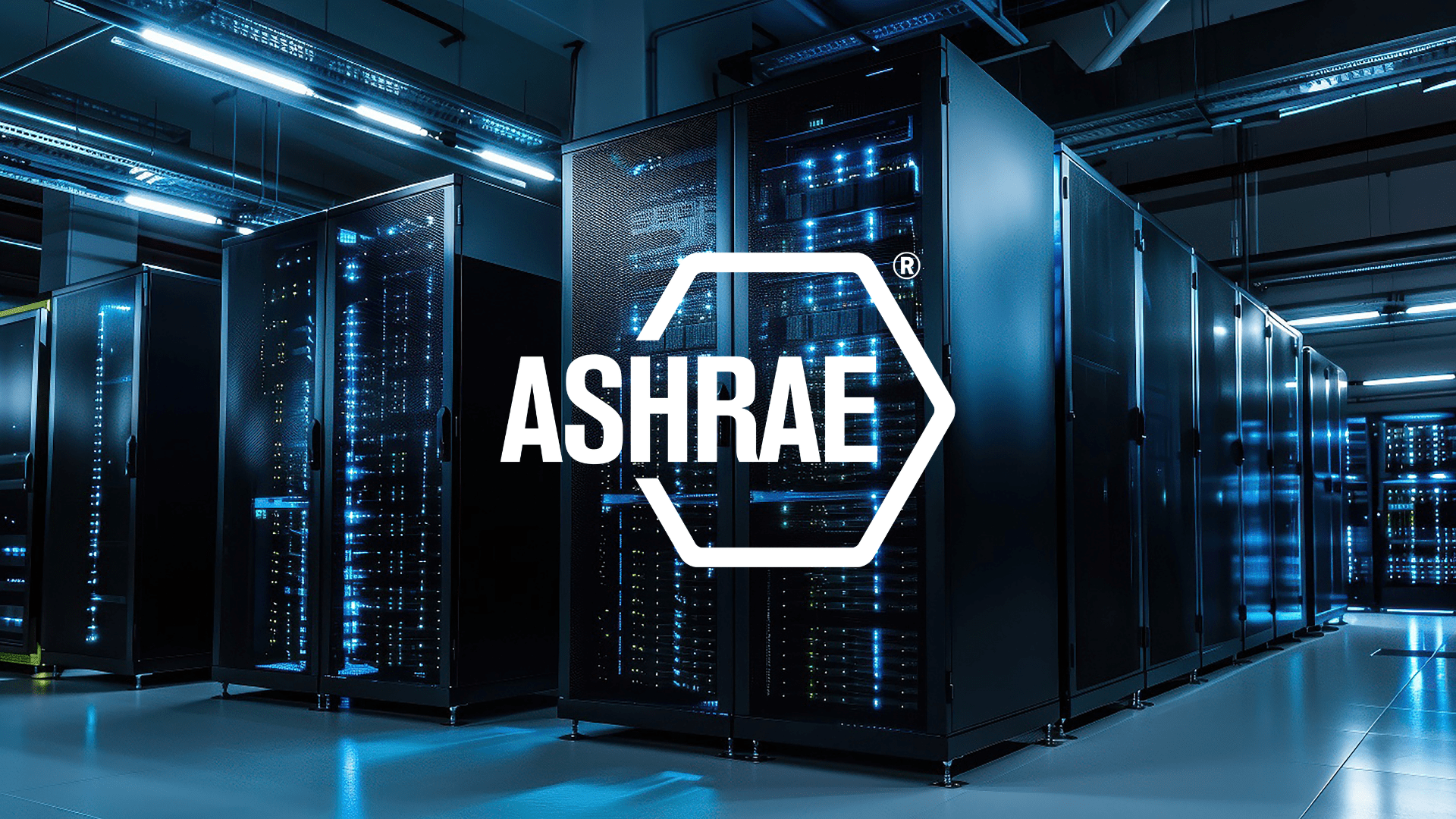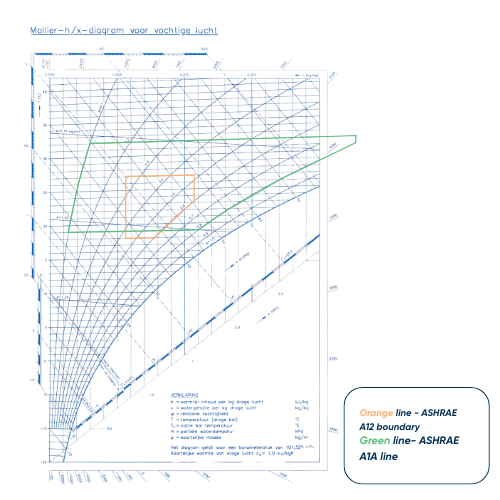Mastering data centre efficiency with ASHRAE standards

In this blog, we delve into the ASHRAE standards, a well-known guidance in the data centre industry.
These standards focus on HVAC (heating, ventilation, and air conditioning), addressing the critical question: "How warm and humid can a data centre be before it impacts normal daily operation?" With servers generating considerable heat and cooling being expensive, it’s preferable if data centres can safely operate at higher temperatures. However, reliability is vital, so temperatures should never compromise this, which is why data centres are typically kept cooler than necessary.
Let’s explore ASHRAE standards, their relevance in current design practices, and our perspective at Haskoning.
What is ASHRAE?
ASHRAE, or the American Society of Heating, Refrigerating, and Air-Conditioning Engineers, is a globally recognised authority in the field of HVAC (heating, ventilation, and air conditioning) standards. It provides guidelines, standards, and best practices to ensure the safe, efficient, and reliable operation of HVAC systems in various industries, including data centres.
How does ASHRAE apply to data centres?
ASHRAE standards, particularly those related to environmental conditions, play a crucial role in data centre operations. Given that data centres house servers and equipment that generate significant heat, maintaining the right temperature and humidity levels is vital to ensure operational efficiency and prevent equipment failure. ASHRAE’s guidelines help data centres to:
ASHRAE standards present both challenges and opportunities for data centres aiming to enhance operational efficiency and reliability. A primary challenge faced by data centres involves maintaining a balance between efficiency and long-term reliability. While cooler temperatures tend to preserve equipment lifespan, they also entail higher energy costs. This challenge necessitates careful consideration to ensure the optimal operation of systems without compromising future performance.
While ASHRAE standards provide a range of acceptable conditions, progress in operational strategies, such as raising allowable temperatures, has been slow. The prevailing tendency to adhere strictly to conservative ASHRAE values reflects a cautious approach driven by concerns over system reliability and risk management, ultimately limiting innovation and broader adoption of more energy-efficient practices.
Compliance with these standards also enhances an organisation's reputation as both forward-thinking and environmentally conscious, fostering increased trust with clients and stakeholders.
Influence on the Industry
ASHRAE is highly influential in setting international benchmarks for HVAC-related practices in data centres. Its standards, such as
ANSI/ASHRAE Standard 15.2-2022 establish the minimum energy-efficiency requirements for the design and operation of data centres.
This influence extends to encouraging innovations that improve both environmental and operational performance within the data centre industry.
Current ASHRAE design standards
The guidelines specify both recommended and allowable ranges for temperature and humidity in data centres to accommodate a variety of operational strategies and equipment types.

The recommended range set between 18°C and 27°C for temperature, and 20% to 80% for relative humidity (RH) is intended to maintain optimal conditions for equipment performance and reliability. Operating within this range is critical for minimising the risk of equipment failure, ensuring that sensitive components are neither overheating nor subject to excessive moisture conditions that could promote condensation and associated risks.
Beyond these ideal conditions, ASHRAE provides an allowable range that extends from 15°C to 32°C for temperature, with humidity levels spanning from 8% to 90% RH. This wider range offers data centre operators greater flexibility, enabling them to adjust their cooling strategies to meet specific operational needs without compromising overall system reliability. Despite this flexibility, maintaining temperatures and humidity closer to the recommended range is generally advised to enhance reliability and prevent potential equipment issues.
Recent updates for 2025 reinforce the importance of flexibility within these ranges. ASHRAE has acknowledged advancements in cooling technologies and has recognised the potential benefits of operating at slightly higher temperatures to improve energy efficiency. These updates suggest that with appropriate environmental monitoring and technology in place, data centres can achieve significant energy savings without adversely impacting equipment performance. This shift offers not only cost savings but also supports sustainability initiatives by reducing the overall energy footprint of data centre operations, aligning with global environmental goals.
As an example, major data centre operators like Equinix have started to embrace the idea of operating at slightly higher temperatures. Although full implementation is still in progress, this shift indicates a growing recognition of the potential benefits of adjusting temperature settings. By doing so, data centres can significantly reduce their energy consumption while maintaining high levels of reliability.
In addition to these guidelines, ASHRAE categorises data centre equipment into four classes (A1 to A4), each with unique environmental tolerances. This classification helps operators tailor their operating conditions based on specific equipment requirements, optimising performance across different technological deployments.
| Classes | Dry Bulb Temperature IT Inlet (°C) |
Humidity Range (non-condensing) |
Max Dew Point (°C) | |
|---|---|---|---|---|
| Long Term / Recommended | ||||
| A1-A4 | 18 to 27 | 5.5°C DP to 60% RH and 15°C DP | ||
| Short Term / Allowable | ||||
| A1 | 15 to 32 | 20% to 80% RH | 17 | |
| A2 | 10 to 35 | 20% to 80% RH | 21 | |
| A3 | 5 to 40 | -12C DP & 8% RH to 85% RH | 24 | |
| A4 | 5 to 45 | -12C DP & 8% RH to 90% RH | 24 | |
These detailed standards illustrate a nuanced approach to environmental management in data centres, balancing the demands for reliability, efficiency, and sustainability.
Our perspective at Haskoning

ASHRAE's role in setting data centre temperature standards is crucial, but an urgent refresh is needed to meet the evolving demands of modern IT infrastructure, sustainability practices, and AI technologies."
At Haskoning we have extensive experience in designing data centres that meet ASHRAE standards while optimising energy efficiency. We understand the importance of maintaining a balance between cooling and reliability, and our designs reflect this philosophy. We encourage data centre operators to explore the allowable ranges provided by ASHRAE, as there is often room to adjust temperatures without compromising safety or performance.
We have experience in this by also working with in-house data centres that can determine their own design temperatures, mainly based on the ASHRAE guidelines.
By slightly increasing the operating temperatures within safe limits, data centres can make significant strides in reducing energy consumption and operational costs. This approach not only benefits the bottom line but also contributes to global sustainability efforts by reducing the environmental impact of data centres.
